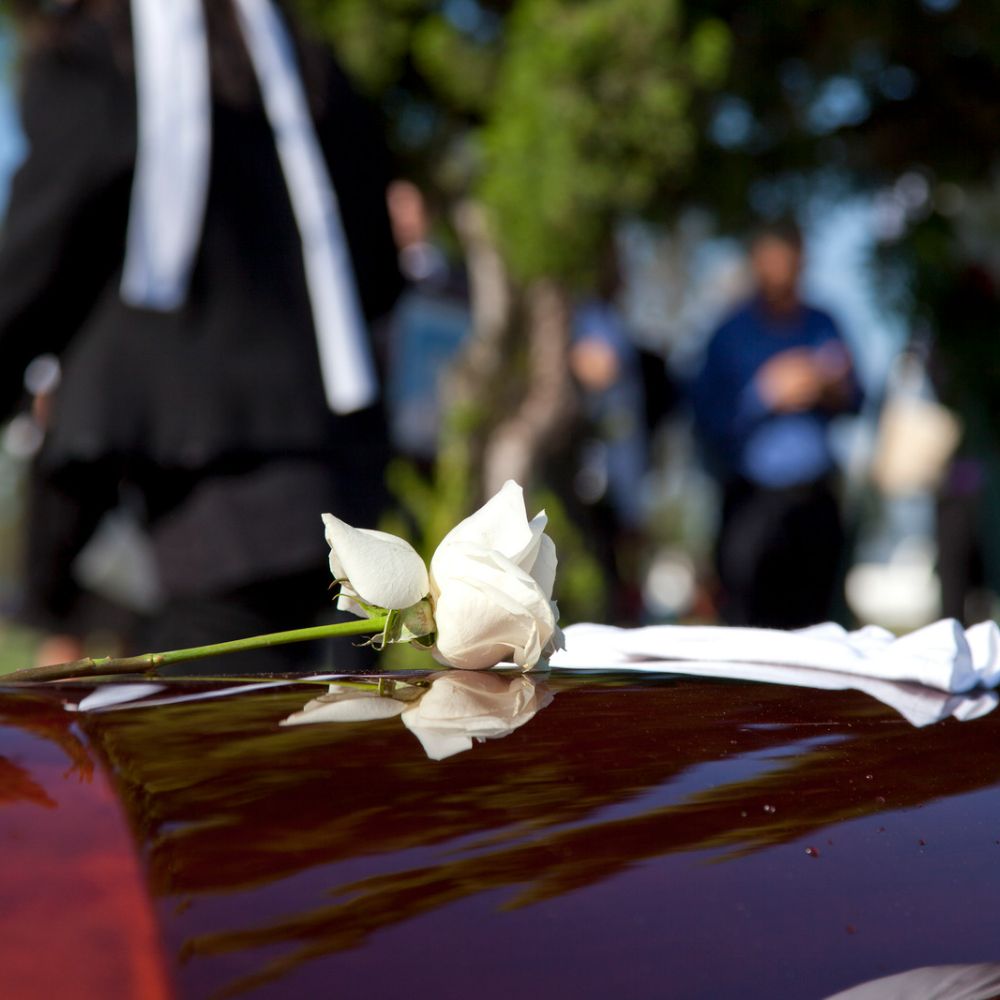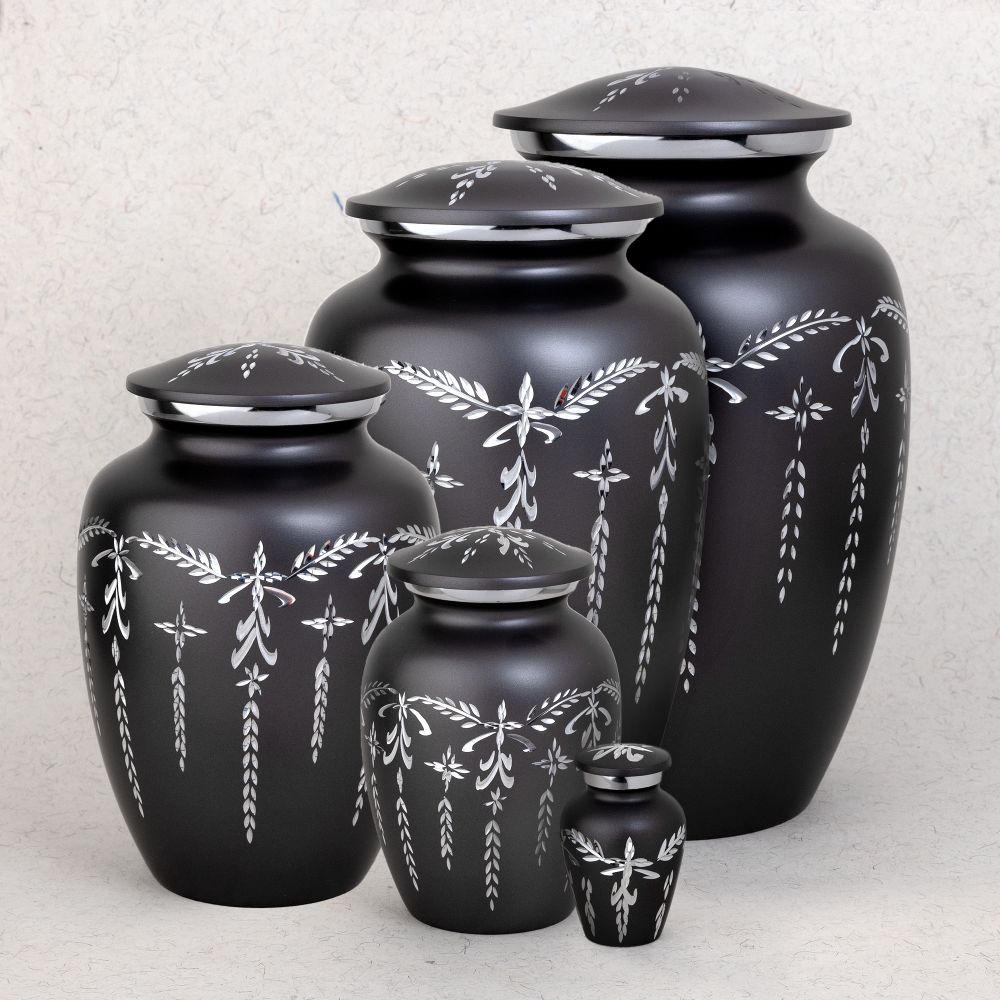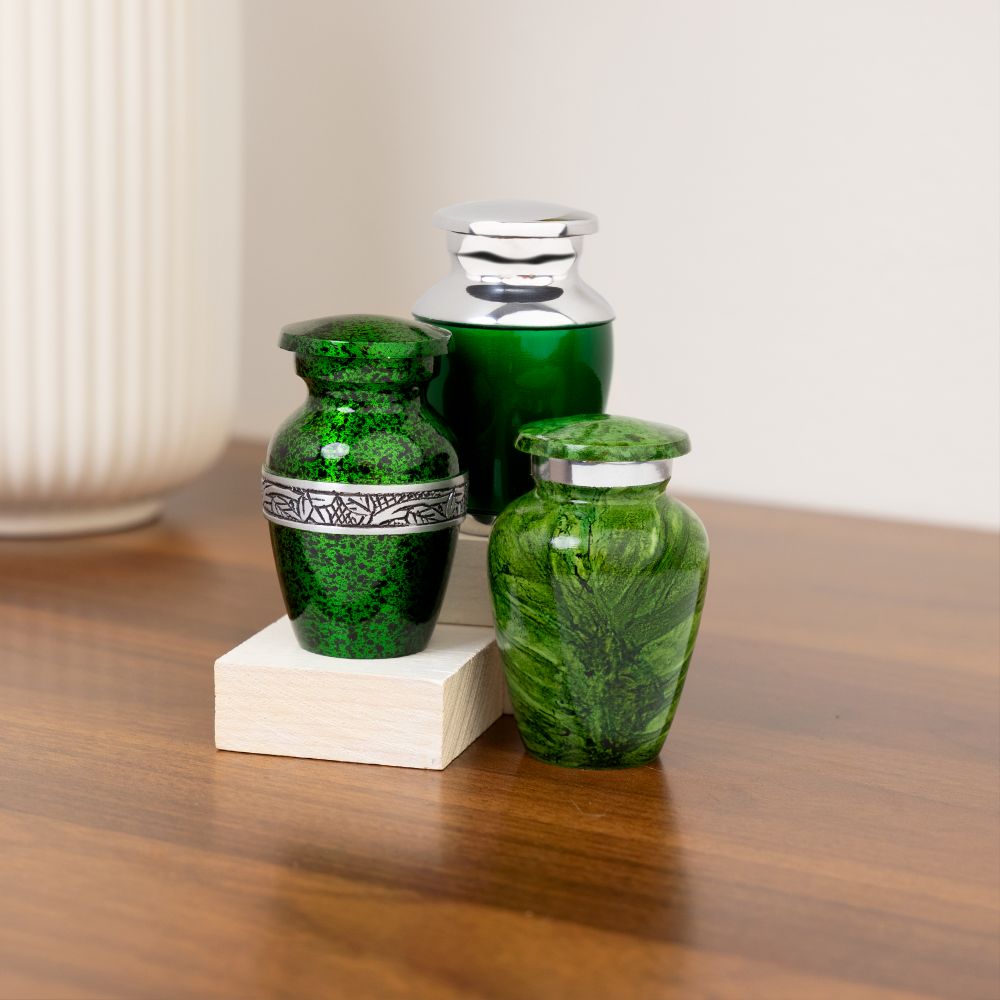All Articles & Guides / Funerals & Celebration of Life / A Glossary of Funeral Terms
A Glossary of Funeral Terms
Since funerals are (hopefully) a rare occurrence for most, the language surrounding them may seem unfamiliar and confusing. We gathered funeral terminology to form a glossary of basic funeral and mortuary terms to help you navigate funeral planning and preparation.
Advance planning – Making arrangements prior to death including for a funeral, cremation, memorial, or other service.
Affirmation - Also known as a celebration of life service, these vary widely in format and content since they are completely personalized depending on plans and wishes of the deceased or their family.
Body donation - The act of giving a deceased’s body to science or medicine to be studied. Memorial jewelry is often used to commemorate those who’ve gifted their body since there is no physical location or ashes to keep.
Burial permit – A legal document required by some states for human remains to be buried or cremated. This does not apply to the scattering of cremated ashes.
Burial vault – A sturdy, sealed outer container designed to keep the weight of the ground from compressing a buried coffin and to keep the ground above the grave from sinking in. Vaults do not prevent decomposition of the body but do protect caskets. There are also burial urn vaults that are designed similarly to protect the urn inside.
Burial plot – also referred to as a cemetery plot, it is a space within a cemetery where a deceased is laid to rest. There are different types of burial plots to consider. There are also double-depth burial plots to allow two bodies to be buried one on top of the other.
Casket – A wood or metal rectangular box in which a body is placed for burial. Cremation caskets are typically made of pressboard or fiberboard and are cremated along with deceased.
Closed casket – When a body is not available for viewing during visitation due to physical or religious circumstances or preference.
Catafalque – A raised platform on which the casketed body of the deceased rests during the funeral or while lying in state. The term “catafalque” comes from an Italian word meaning “scaffold.” Also known as a bier.
Cemetery – A place for burying the dead, also known as a graveyard. From a Greek word meaning “sleeping place.”
Coffin – A casket. Coffins are sometimes distinguished from caskets by their shape, with coffin referring to a tapered hexagonal or octagonal box with a solid lid and casket referring to a rectangular burial box with a split lid to allow viewing of the body.
Columbarium – A vault lined with niches in which cremation urns are placed.
Companion Urn – A large cremation urn designed to accommodate the cremated remains of two individuals. Cremains may be separated or commingled, depending on the design of the companion urn.
Communal cremation – a method of pet cremation where several animals are placed in a cremation chamber to be cremated at the same time. The ashes of pets are mingled and not returned to the owner if this method is chosen.
Condolences – an expression of sympathy to comfort someone who is grieving.
Corpse – A dead body, also known as a cadaver.
Cremains – An abbreviated term for cremated remains. Sometimes referred to as “ashes,” cremains consist of bone fragments remaining after the body is cremated, which are then pulverized into a coarse powder.
Cremation – Incineration of a corpse. From the Latin word cremare, meaning “to burn.”
Cremation garden – also can be referred to as a memorial garden; a garden with the purpose of allowing loved ones to scatter ashes and memorialize the deceased. These can often be designed in backyards with different types of garden memorial products.
Cremation jewelry – Pendants or bracelets designed to hold a small amount of cremated remains, cremation jewelry can be worn or displayed in a glass case.
Cremation urn – A vessel in which cremated remains are placed for display or burial.
Cremator – An industrial furnace in which a corpse is incinerated at extremely high temperatures.
Crematorium or crematory – A facility in which bodies are cremated. A crematorium may be a stand-alone facility or part of chapel or a funeral home.
Crypt – An above-ground structure made of concrete, used for the entombment of human remains. From the Latin word crypta, meaning “vault” or “cavern.” See mausoleum.
Death certificate – A legal document signed by a coroner or other medical professional to certify the death of a human. The death certificate typically lists the time, location, and cause of death and is used to facilitate legal matters pertaining to death, from permitting burial to settling an estate.
Death notice – A paid newspaper advertisement announcing a death, funeral arrangements, and other details survivors wish to publish.
Direct Burial – A burial that takes place when the body is transferred directly from the funeral home to the burial site without public viewing or services. Services may or may not be held after the burial.
Direct Cremation – A cremation that takes place when the body is transferred directly from the funeral home to the crematory without public viewing or services. Services may or may not be held after the cremation.
Disinter – The removal of bodily remains from the ground for the purpose of burial in another location.
Disposition – The final placement of a body or cremated remains, such as burial of the body in the ground or a mausoleum or burial, scattering, or inurnment of cremated remains.
Embalming – The treatment of a corpse with preservatives to delay decay.
Epitaph – A message on a memorial commemorating a deceased person, typically a favorite verse or quotation.
Eulogy – A speech or written tribute that extols the virtues of the deceased. From the Greek word eulogia, meaning “praise.”
Exhumation –The process of digging up human remains, typically for medical examination or legal investigation. From a Latin term meaning “out of the earth.”
Funeral – A service conducted in the presence of the body to commemorate the life and death of the deceased.
Funeral director – A professional who prepares a deceased body for burial or other disposition and facilitates the burial or disposition. Sometimes referred to as a mortician or undertaker, the funeral director also provides supportive services to survivors.
Funeral flowers – different assortments of flowers that are positioned at different points of a funeral or viewing. Flowers also have different symbolisms.
Funeral home – A facility in which deceased bodies are prepared for burial or cremation and in which funerals are conducted. Also known as a mortuary.
Funeral Rule – A Federal Trade Commission (FTC) ruling enacted by the U.S. Congress that requires funeral directors to give consumers, upon request, an itemized General Price List (or prices over the telephone), as well as other information about their goods and services.
Grave liner – An unsealed concrete receptacle of two or more pieces in which the casket is placed at the time of burial to protecting the casket and prevent the ground from sinking. Grave liners and vaults are not required by law, but many cemeteries do require them.
Grave marker – a decorative slab that is used to make a grave and can be personalized to honor a deceased loved one.
Green burial – A sustainable alternative to traditional burial intended to return the body to the earth in a natural manner, without inhibiting decomposition.
Hearse – A vehicle in which a coffin is transported to a church or a cemetery; also known as a funeral coach.
Headstone – An upright grave marker also referred to as a tombstone. They are typically made of stone and have a name and date inscribed, sometimes with a quote or message.
Interment – The physical process of the in-ground burial of a body which cemeteries often charge for separately from a burial plot purchase.
Inurnment – The placement of cremated remains in an urn for final disposition in a grave, crypt or niche.
Keepsake jewelry - also referred to as memorial jewelry, it’s a personal wearable piece that honors the deceased and offers the wearer a tangible remembrance of a loved one.
Keepsake urn – A small urn designed to hold a small amount of cremated remains. Also known as a sharing urn.
Lying in state – The custom of presenting the deceased for viewing by relatives and friends prior to burial or cremation.
Mausoleum – A public or private building that serves as a permanent above-ground resting place for the dead. From the Latin word mausoleum, meaning “magnificent tomb.”
Memorial service – A service that commemorates the life and death of the deceased. A memorial service is distinguished from a funeral in that the body is not present at a memorial service.
Memorial photo plaques – porcelain plaques customized with a photo using a process that fires the image onto ceramic at a high temperature and can be added to a headstone or memorial plaque.
Niche – A shelf-like space in a mausoleum or columbarium where urns containing cremains are placed.
Obituary – Similar to a death notice, an obituary typically contains more detailed biographical information. An obituary is a news story, while a death notice is considered an advertisement.
Pallbearer – An individual who carries the casket from the funeral home to the hearse and from the hearse to the church or cemetery. Sometimes close friends, members of fraternal organizations, or others with significant ties to the deceased are named as honorary pallbearers, who do not actually carry the casket.
Pre-planning – Planning a funeral in advance of need by listing preferences for funeral services, and cemetery arrangements. Pre-planning does not require pre-payment.
Shiva – In Judaism, shiva is the week-long period of mourning for the seven first-degree relatives: father, mother, son, daughter, brother, sister, and spouse. (“Shiva” is the Hebrew word for “seven.” With other activities suspended, observation of the shiva ritual is referred to as “sitting shiva.”
Urn – a container that holds the cremains of a loved one. These are often very personal and represent the deceased.
Urn plaque – A custom engraved piece of metal that can be attached to the wood base of an urn.
Urn pendant – Also referred to as an urn medallion, these are personalized engravable metal pendants that are designed for hanging on an urn that is not engravable.
Visitation – A scheduled time for family and friends to pay their respects to the deceased whether they are in a casket or an urn. Visitation is typically held in a private room in a funeral home. Visitation may or may not include a prayer service, scripture reading, or other ceremony.
Wake – A watch kept over the deceased, sometimes throughout the entire night before the funeral. Once held in the home or place of death with the practical purpose of ensuring that the deceased was truly dead, modern wakes are occasions of shared mourning and support for the bereaved.
It’s easy to become frustrated during an emotional time so taking steps towards understanding funeral terms can help alleviate stress from miscommunication. Coming across uncommon mortuary terms or funeral terminology is normal, and those working in the death care industry should be helpful in clearing up any questions should you come across terms that haven’t been included in this glossary.






